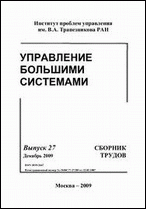|
This article is cited in 2 scientific papers (total in 2 papers)
Mathematical Control Theory
Implicit adaptation of mesh model of transient heat conduction problem
P. Zhukova, A. V. Fomina, A. I. Glushchenkob
a STI NUST “MISIS”, Stary Oskol
b V.A. Trapeznikov Institute of Control Sciences of RAS, Moscow
Abstract:
Considering high-temperature heating, the equations of transient heat conduction model require an adaptation, i.e. the dependence of thermophysical parameters of the model on the temperature is to be identified for each specific material to be heated. This problem is most often solved by approximation of the tabular data on the measurements of the required parameters, which can be found in the literature, by means of regression equations. But, for example, considering the steel heating process, this approach is difficult to be implemented due to the lack of tabular discrete measurements for many grades of steel, such as alloyed ones. In this paper, the new approach is proposed, which is based on a solution of a related variational problem. Its main idea is to substitute the adaptation process in the classical sense (i.e., to find the dependencies of thermophysical parameters on temperature) with ”supervised learning” of a mesh model on the basis of the technological data received from the plant. The equations to adjust the parameters of the transient heat conduction model, which are related to the thermophysical coefficients, have been derived. A numerical experiment is conducted for steel of a particular group of grades, for which enough both technological as well as tabular data are available. As a result, the ”trained” mesh model, which has not received explicitly any information about the physical and chemical properties of the heated substance, demonstrated an average error of $18.82 ^\circ C$, which is quite close to the average error of the model adapted classically on the basis of the tabular data ($18.1^\circ C$).
Keywords:
mesh model, stochastic model of transient heat conduction; model adaptation; gradient descent.
Received: May 13, 2022
Published: November 30, 2022
Citation:
P. Zhukov, A. V. Fomin, A. I. Glushchenko, “Implicit adaptation of mesh model of transient heat conduction problem”, UBS, 100 (2022), 78–106
Linking options:
https://www.mathnet.ru/eng/ubs1126 https://www.mathnet.ru/eng/ubs/v100/p78
|

| Statistics & downloads: |
| Abstract page: | 44 | | Full-text PDF : | 20 | | References: | 17 |
|




 Contact us:
Contact us: Terms of Use
Terms of Use
 Registration to the website
Registration to the website Logotypes
Logotypes








 Citation in format
Citation in format 
